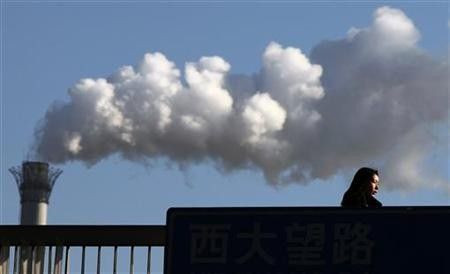EPA Proposes Emission Standard For New Power Plants

The Environmental Protection Agency proposed the first limits on carbon dioxide emissions from U.S. power plants, a move cheered by environmentalists as a positive step toward addressing a pollutant linked to climate change.
Under the rules, emissions from new power plants would be capped at 1,000 pounds of carbon dioxide per megawatt hour, about the level of modern natural gas plants, the EPA said Tuesday. The average natural gas plant emits 1,135 pounds of carbon dioxide; however, many existing coal plants emit nearly 1,800 pounds.
The new rules would only apply to newly constructed plants, not existing facilities. Plants built within the next year would be exempt from the rule. The standard is the first of its kind issued by the EPA for carbon dioxide emissions. The EPA announced the new rules on Tuesday.
We're taking a common-sense step to reduce pollution in our air, protect the planet for our children, and move us into a new era of American energy, Lisa Jackson, EPA administrator, said in a statement.
New coal-burning plants would have to use carbon capture and storage technology, which is prohibitively expensive, utilities and energy analysts told the Wall Street Journal.
Right now there are no limits to the amount of carbon pollution that future power plants will be able to put into our skies -- and the health and economic threats of a changing climate continue to grow, Jackson said.
Republicans and industry groups have accused the Obama administration of pushing the proposal without thinking of the consequences. They claim the move will lead to inflated electricity prices and possibly kill the coal industry, costing hundreds of jobs.
This rule is a dramatic overreach and a heavy blow to one of America's richest natural resources -- coal -- that the president once heralded but now ignores, House Speaker John Boehner said in a statement.
Utilities had already started closing, not building, coal plants, before the EPA announced its proposal. Although coal is still the main fuel for electrical generation in the U.S., its share of monthly power generation dropped below 40 percent in the last two months of 2011, according to the Energy Department. The last time coal's share of total generation was below 40 percent for a monthly total was March 1978.
© Copyright IBTimes 2024. All rights reserved.





















